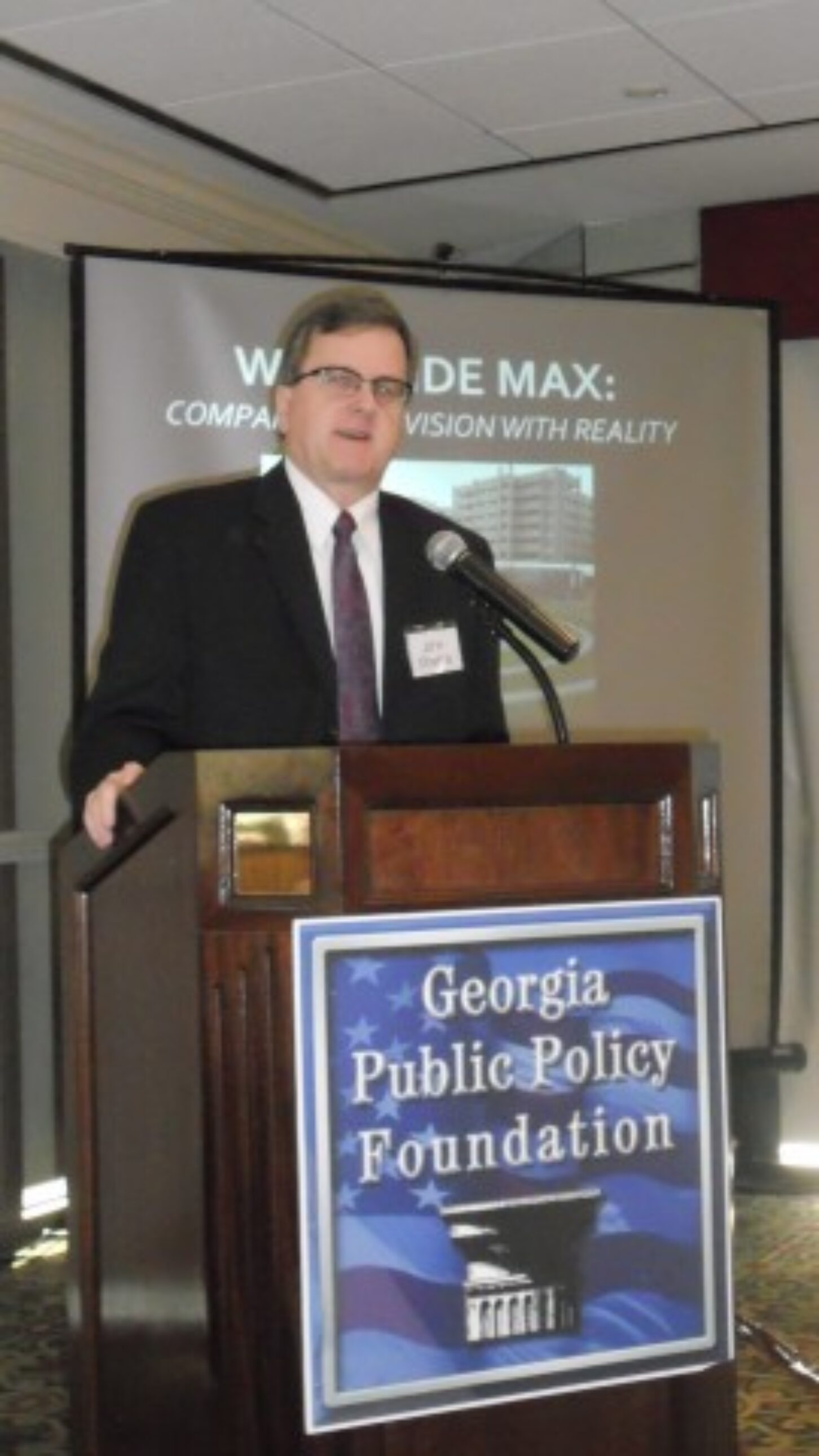

By Robert Helin, Policy Foundation Intern
The Georgia Public Policy Foundation hosted its final Leadership Breakfast of 2011 on December 14, featuring John Charles, President and CEO of Oregon’s Cascade Policy Institute.
Charles’ presentation, “Portland: Model or Maverick?” focused on Portland’s approach to land use, especially as it applies to the city’s insistence on developing light rail at the expense of bus and automobile use. He highlighted how the city has pursued honorable intentions with poor policy and flawed logic. Watch his presentation on the Policy Foundation’s YouTube Channel.
Portland’s vision of combining mixed-use development (a zoning practice of mixing residential housing with commercial businesses) with easy access to the light-rail system has proven to be an abject failure, with an average of 2-5 percent of residents in those buildings making use of the light rail system in the morning “rush hour” commute and even less at other times of the day. This is a mere pittance when considering the city’s rail project costs an average of $205 million a mile.

These residents “are not using the system even with the train practically in their living room because it is not taking them where they want to go,” Charles said. “It doesn’t take them from enough places to enough places in the time that they want.”
Charles, who investigated the costs of a Bus Rapid Transit System, said that even if the buses used were the type President Obama travels in – $ 1.1 million apiece – it would still be impossible to spend the kind of money rail requires “even if they tried.”
In an interview with the Foundation after his presentation, Charles described Atlanta’s newly implemented High-Occupancy Toll (HOT) lanes on I-85 as a “sort of halfway house in the right direction” for the city. Congestion pricing combined with bus access in those lanes has the biggest bang for the buck as it relates to providing congestion relief for weary commuters.
Charles says “in places like Atlanta, there is no justification for an exclusive right-of-way for transit” such as rail provides. “Transit should be road-based in order to dilute the cost over a much broader base of users.”
More importantly, a light-rail system has to be “auto competitive,” Charles points out. “Modestly priced and inexpensive automobiles that can take you anywhere you want to go and sit right in your driveway are what the train is competing against.”
Charles clearly demonstrated that even in a city like Portland, geared toward a massively subsidized rail system, people still choose their cars. Portland’s experiences with light rail should be kept in mind by Georgia policy-makers as they consider the proposed Cobb County light-rail project, which would get $579 million in funding in next year’s transportation plan. History suggests that cost is likely to soar when and if construction begins.